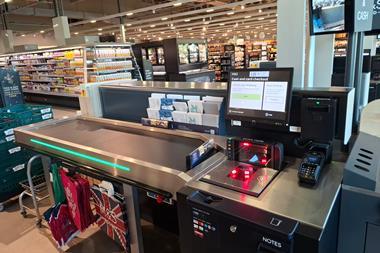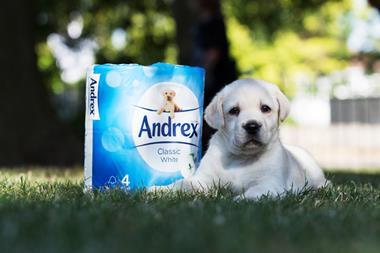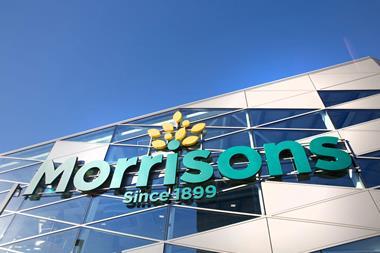Liz Hamson explores how a Waitrose supply deal has changed the life of specialist milk producer Buffalo House in the second feature in our series about buyer-supplier relationships
Local and regional produce is big news in the multiples. But pair a small producer with big aspirations with a big grocery retailer with small aspirations and the cynics would say it is a situation in which the naïve hopes of the former will inevitably be exploited by the latter.
It might have been the case a few years ago, when the local and regional bandwagon started rolling, but these days they would mostly be wide of the mark.
Take Waitrose, with its strong reputation for local and regional produce, and Buffalo House, a specialist milk producer typical of the hundreds of highly innovative but inexperienced small suppliers that approach the retailer annually. The relationship is less than 18 months old, but a perfect example of how a retailer can help a small company to grow without destroying the unique characteristics that made its products so attractive in the first place.
Based in Leighton Buzzard, Buffalo House produces high protein, low fat Buffalo Gold milk from a herd of 400 Romanian buffalo, the largest herd in the UK. It is an expensive and lengthy undertaking: buffalo produce just five litres a day each compared to the 25 produced by a Friesian cow, making production costs higher than average. But in the 1990s, when farmer Nick Griffin was considering the move, the milk industry was dogged by red tape and the cattle industry by the BSE crisis: buffalo presented a novel way to circumvent both problems.
From March 2003, the company began selling pasteurised milk through local stores, doorstep deliveries, via mail order and on-line. Griffin realised he had a hit on his hands when orders started coming in from as far afield as Guernsey as word of its alleged health benefits began to spread - some customers say that it has helped to alleviate digestive problems, allergies and even eczema. But even before the positive customer feedback, he had already decided to take the plunge and approach Waitrose.
He wasn’t sure what to expect when he first sat down with Waitrose’s then cheese buyer, Graham Cassie and his boss, head of dairy buying, Richard Sadler last January. He recalls: “They came to take a look at the farm. We asked whether they were interested and they said they would be if we produced our own brand. From March onwards the milk started to be tested.”
However, Cassie, who was promoted in March to local and regional buyer, knew exactly what Waitrose was looking for. “We
looked at the farm and the animals’ welfare. These are important for us in terms of integrity. Griffin talked to us about the properties of buffalo milk. We told him it was important to get these claims substantiated.”
They also discussed how the milk would be processed, packaged, labelled and marketed. It was important to rein in some of Griffin’s expectations, says Cassie. “Nick has an abundance of enthusiasm and was very keen to do everything with the milk. As the conversation progressed, we decided it would be best to start with liquid milk and then build the brand.”
High production costs meant it was vital that Griffin stood his ground on the price the milk would retail at, but he says Waitrose was surprisingly amenable from the outset - despite the fact that at £1.60 a litre, it was over 50p more expensive than another specialist milk sold at its stores.
Cassie admits there were “concerns” over the “considerably higher price”, but says: “First and foremost we were looking to retail the product at the price it was sold at locally. The most important thing is that it’s sustainable for the producer to be able to continue supply.”
In August, the milk was listed in two stores, Milton Keynes and Leighton Buzzard. Initially Waitrose erred on the side of caution and agreed to stock 15 litres of the milk a week at each store.
Griffin says: “To Waitrose’s credit, staff from both branches came out to the farm to see what the product was all about so they could talk knowledgeably to customers.”
It proved so popular that before long, Leighton Buzzard had increased its order to 60 litres and Milton Keynes to 100 litres a week. In the first half of this year it was listed in 19 stores and is expected to be in 25 by Monday (June 14). Again the retailer has done its best to help the producer. Instead of expecting it to make twice-weekly deliveries direct to each store as it did when it was only supplying two, the retailer now allows it to make them directly to its Brinklow regional distribution depot. Waitrose was prepared to be flexible, because “every case is individual”, says Cassie.
Griffin is in no doubt that the step change in production would not have been possible without the retailer. Waitrose provided publicity for its milk and helped it to expand its operations to cope with higher production volumes.
Griffin adds: “Waitrose is important to us because it gives us a degree of security. When our customers want to know where they can get the milk from, we can point them to Waitrose.”
At the moment, Buffalo House produces about 2,000 litres a week, around a third of which goes to Waitrose. Griffin, who says he has been surprised by the free rein he has been given to develop new products, is discussing with Cassie the possibility of extending its range to ice cream and buffalo mozzarella cheese - both of which Buffalo House sells direct to customers - as well as a probiotic yogurt still in development.
Tests on a cheese for Waitrose are currently in their early stages. Buffalo House’s track record with milk does not guarantee success, Cassie says bluntly, “It’ll be listed if they offer differentiation and are commercially successful. It has to stack up because at the end of the day, something else is being taken off the shelf.”
However, he adds, Griffin is receptive to advice and has the right attitude to succeed. “Like the milk, it’s quite a different product. We’re involved in helping it evolve and develop. So in that sense, it is a much closer relationship than we would have with some producers,” he says. “With Nick it has got to the stage where he’ll show us the cheese and we’ll give him feedback. It’s not ready to be listed yet, but hopefully it will be.”
>>multiple’s strategic review puts local produce on a new footingWaitrose currently boasts 185 local and regional producers and Graham Cassie is unequivocal about their appeal. “Small producers are very passionate about what they do. That’s what gives them uniqueness and really innovative products.”
However, last year the retailer realised that if it was to hone its local and regional lines, a strategic review of how it handled small suppliers was necessary.
“We were getting phone calls from many fantastic small producers but we weren’t listing as many as we wanted,” he explains. “Some had no experience and were unaware of basic food regulations and labelling. We were giving them feedback. However, I felt that I was being stretched. So we had a brainstorm on how to tackle the lack of preparation and understanding of our expectations by some small producers.”
With help from Food From Britain, Waitrose launched its “meet the buyer” days at the start of the year. Taking place at least once every six months within FFB’s eight regional food groups in England, the days provide a chance for local producers to present their products directly to Waitrose buyers.
For Waitrose, meeting producers that have effectively been screened by FFB means some of the wheat has already been sorted from the chaff. Cassie adds: “It’s about better communication with producers. They’re learning to ask the right questions. People are more likely to be listed.”
How small producers win over Waitrose
Local and regional produce is big news in the multiples. But pair a small producer with big aspirations with a big grocery retailer with small aspirations and the cynics would say it is a situation in which the naïve hopes of the former will inevitably be exploited by the latter.
It might have been the case a few years ago, when the local and regional bandwagon started rolling, but these days they would mostly be wide of the mark.
Take Waitrose, with its strong reputation for local and regional produce, and Buffalo House, a specialist milk producer typical of the hundreds of highly innovative but inexperienced small suppliers that approach the retailer annually. The relationship is less than 18 months old, but a perfect example of how a retailer can help a small company to grow without destroying the unique characteristics that made its products so attractive in the first place.
Based in Leighton Buzzard, Buffalo House produces high protein, low fat Buffalo Gold milk from a herd of 400 Romanian buffalo, the largest herd in the UK. It is an expensive and lengthy undertaking: buffalo produce just five litres a day each compared to the 25 produced by a Friesian cow, making production costs higher than average. But in the 1990s, when farmer Nick Griffin was considering the move, the milk industry was dogged by red tape and the cattle industry by the BSE crisis: buffalo presented a novel way to circumvent both problems.
From March 2003, the company began selling pasteurised milk through local stores, doorstep deliveries, via mail order and on-line. Griffin realised he had a hit on his hands when orders started coming in from as far afield as Guernsey as word of its alleged health benefits began to spread - some customers say that it has helped to alleviate digestive problems, allergies and even eczema. But even before the positive customer feedback, he had already decided to take the plunge and approach Waitrose.
He wasn’t sure what to expect when he first sat down with Waitrose’s then cheese buyer, Graham Cassie and his boss, head of dairy buying, Richard Sadler last January. He recalls: “They came to take a look at the farm. We asked whether they were interested and they said they would be if we produced our own brand. From March onwards the milk started to be tested.”
However, Cassie, who was promoted in March to local and regional buyer, knew exactly what Waitrose was looking for. “We
looked at the farm and the animals’ welfare. These are important for us in terms of integrity. Griffin talked to us about the properties of buffalo milk. We told him it was important to get these claims substantiated.”
They also discussed how the milk would be processed, packaged, labelled and marketed. It was important to rein in some of Griffin’s expectations, says Cassie. “Nick has an abundance of enthusiasm and was very keen to do everything with the milk. As the conversation progressed, we decided it would be best to start with liquid milk and then build the brand.”
High production costs meant it was vital that Griffin stood his ground on the price the milk would retail at, but he says Waitrose was surprisingly amenable from the outset - despite the fact that at £1.60 a litre, it was over 50p more expensive than another specialist milk sold at its stores.
Cassie admits there were “concerns” over the “considerably higher price”, but says: “First and foremost we were looking to retail the product at the price it was sold at locally. The most important thing is that it’s sustainable for the producer to be able to continue supply.”
In August, the milk was listed in two stores, Milton Keynes and Leighton Buzzard. Initially Waitrose erred on the side of caution and agreed to stock 15 litres of the milk a week at each store.
Griffin says: “To Waitrose’s credit, staff from both branches came out to the farm to see what the product was all about so they could talk knowledgeably to customers.”
It proved so popular that before long, Leighton Buzzard had increased its order to 60 litres and Milton Keynes to 100 litres a week. In the first half of this year it was listed in 19 stores and is expected to be in 25 by Monday (June 14). Again the retailer has done its best to help the producer. Instead of expecting it to make twice-weekly deliveries direct to each store as it did when it was only supplying two, the retailer now allows it to make them directly to its Brinklow regional distribution depot. Waitrose was prepared to be flexible, because “every case is individual”, says Cassie.
Griffin is in no doubt that the step change in production would not have been possible without the retailer. Waitrose provided publicity for its milk and helped it to expand its operations to cope with higher production volumes.
Griffin adds: “Waitrose is important to us because it gives us a degree of security. When our customers want to know where they can get the milk from, we can point them to Waitrose.”
At the moment, Buffalo House produces about 2,000 litres a week, around a third of which goes to Waitrose. Griffin, who says he has been surprised by the free rein he has been given to develop new products, is discussing with Cassie the possibility of extending its range to ice cream and buffalo mozzarella cheese - both of which Buffalo House sells direct to customers - as well as a probiotic yogurt still in development.
Tests on a cheese for Waitrose are currently in their early stages. Buffalo House’s track record with milk does not guarantee success, Cassie says bluntly, “It’ll be listed if they offer differentiation and are commercially successful. It has to stack up because at the end of the day, something else is being taken off the shelf.”
However, he adds, Griffin is receptive to advice and has the right attitude to succeed. “Like the milk, it’s quite a different product. We’re involved in helping it evolve and develop. So in that sense, it is a much closer relationship than we would have with some producers,” he says. “With Nick it has got to the stage where he’ll show us the cheese and we’ll give him feedback. It’s not ready to be listed yet, but hopefully it will be.”
>>multiple’s strategic review puts local produce on a new footingWaitrose currently boasts 185 local and regional producers and Graham Cassie is unequivocal about their appeal. “Small producers are very passionate about what they do. That’s what gives them uniqueness and really innovative products.”
However, last year the retailer realised that if it was to hone its local and regional lines, a strategic review of how it handled small suppliers was necessary.
“We were getting phone calls from many fantastic small producers but we weren’t listing as many as we wanted,” he explains. “Some had no experience and were unaware of basic food regulations and labelling. We were giving them feedback. However, I felt that I was being stretched. So we had a brainstorm on how to tackle the lack of preparation and understanding of our expectations by some small producers.”
With help from Food From Britain, Waitrose launched its “meet the buyer” days at the start of the year. Taking place at least once every six months within FFB’s eight regional food groups in England, the days provide a chance for local producers to present their products directly to Waitrose buyers.
For Waitrose, meeting producers that have effectively been screened by FFB means some of the wheat has already been sorted from the chaff. Cassie adds: “It’s about better communication with producers. They’re learning to ask the right questions. People are more likely to be listed.”
How small producers win over Waitrose


















No comments yet